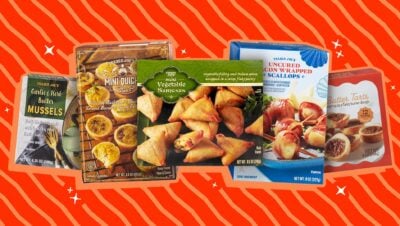Even if you’ve never heard of cassava, you’ve probably eaten it. Who hasn’t had boba tea or tapioca pudding? Not to mention all of the foods that use it as a thickening agent like some gravy, pasta, and tortillas. And cassava can also be a tasty ingredient on its own, if it’s cooked right. So, let’s get down to the important cassava questions, like is cassava the same as yuca? Does cassava taste like potato? And more.
What is cassava?
Cassava, also known as manioc or yuca (yep, cassava and yuca are the same things), is a starchy root vegetable grown in South America. It’s used in local dishes like soups and stews or served as a side dish, in all the same ways as potatoes. It’s a good source of carbohydrates, dietary fiber, vitamin C and potassium.
However, it shouldn’t be eaten raw, as it contains some natural forms of cyanide, which can be removed by soaking it in water for up to several days, then boiling the cassava (making sure you don’t save and reuse the water!), and finally, cooking it thoroughly.
What does cassava taste like? Does cassava taste like potato?
Cassava has a very mild (some might even say bland) taste with a hint of sweetness and a slightly nutty flavor. It is pretty similar to potato, but even blander, if you can imagine it.
It’s important to note that there are two different types of cassava: sweet and bitter. The sweet type is what you’ll find in a store. The bitter type is mainly used for making flour and tapioca.
What is tapioca?
Tapioca is a starch that’s made from cassava, and is used as a thickening agent in foods, like sauces and gravies. It’s also used as a main ingredient. You probably know it best from tapioca pudding. And it’s used as an ingredient in a wide range of Southeast Asian jellies and puddings.
What is cassava flour?
While it’s similar, tapioca isn’t the same as “manioc flour,” which is ground from the cassava itself, giving it more fiber than tapioca. In fact, tapioca is a byproduct of the process that makes manioc flour (aka cassava flour), as it’s made from the liquid that’s produced when they squeeze out wet cassava pulp to make the flour.
Both manioc flour and tapioca are used as wheat alternatives when making gluten-free bread pastries, as it traps moisture, keeping them light and moist.
What cassava or tapioca snacks can I find at my local grocery store?
One of our favorites is “pão de queijo,” or as they’re commonly known in the U.S., “Brazilian Cheese Balls.” These tasty little cheese buns are made from tapioca flour, so they’re naturally gluten free. And several companies are selling them in the states, most notably as “Brazi Bites Brazilian Cheese Bread.”
You can find boba pearls in any number of snack dishes and packaged bubble teas. But if you’re looking for a snack, you could always try Tropical Field’s Boba Tea Mochi, which features a boba pearl right in the center.
And if you want to chomp on some real cassava, Goya makes some tasty cassava yuca chips. And you don’t even have to soak them for days!





Thoughts? Questions? Complete disagreement? Leave a comment!